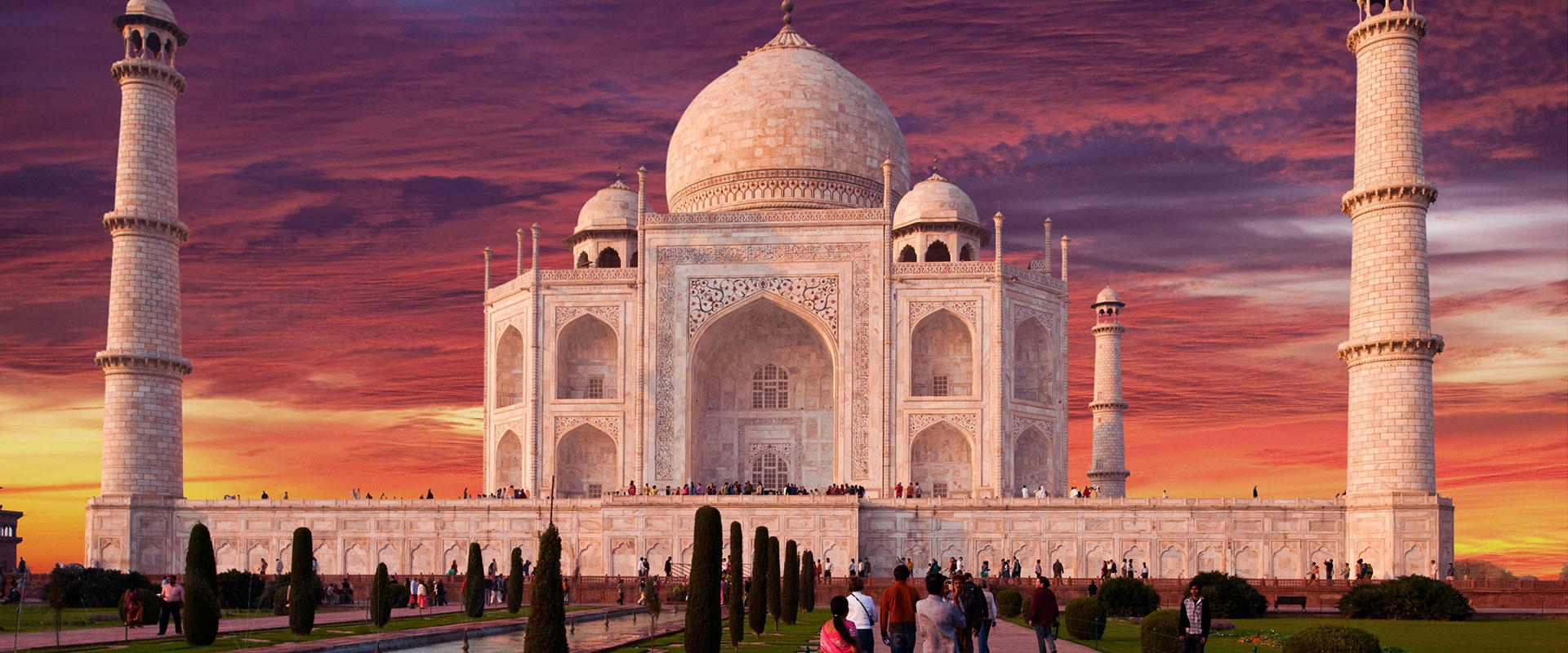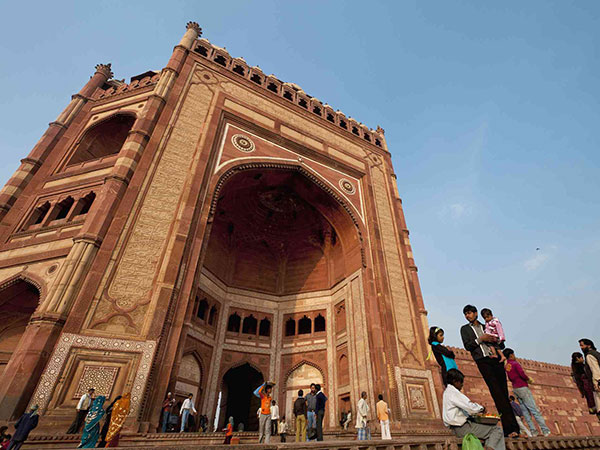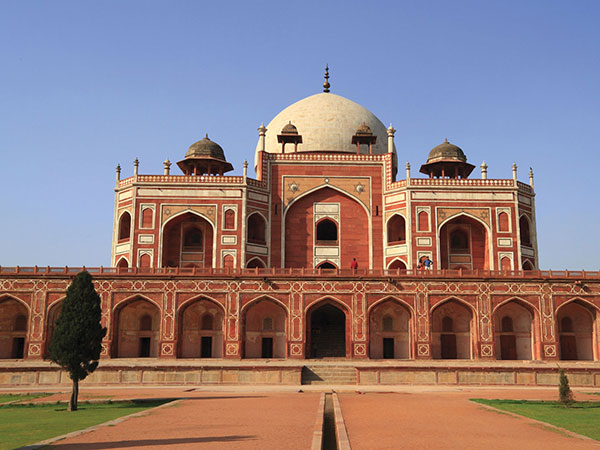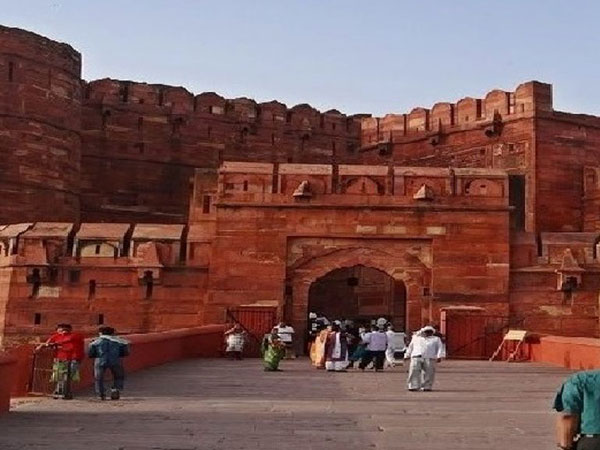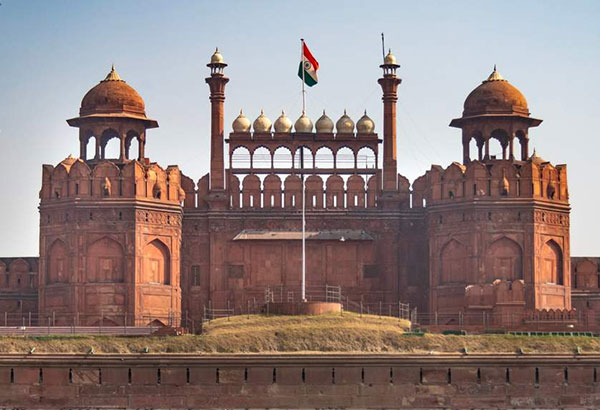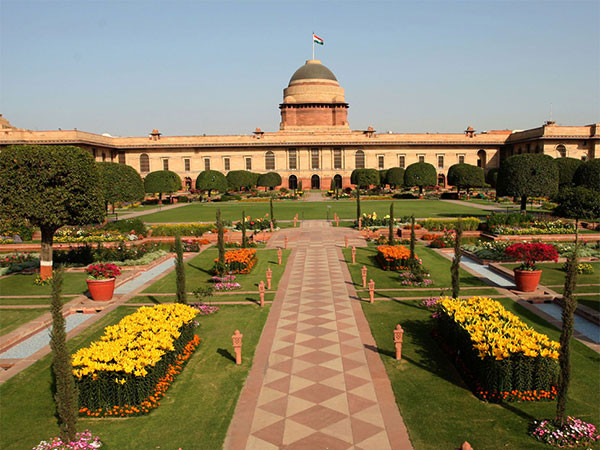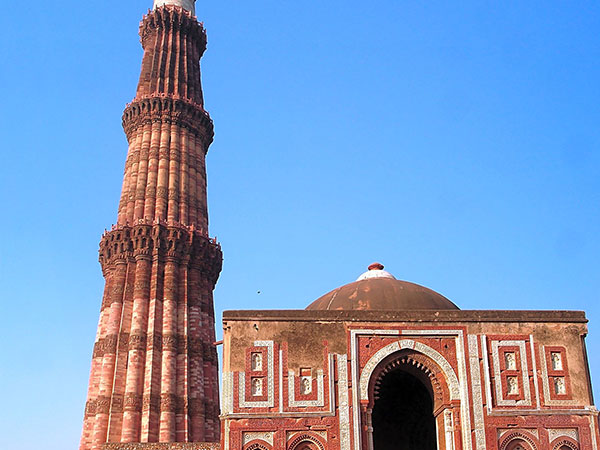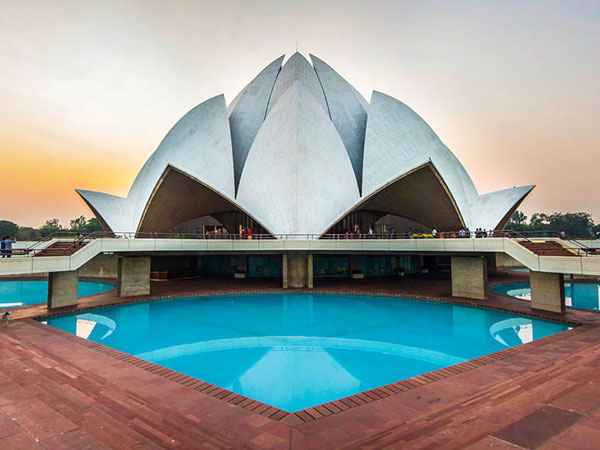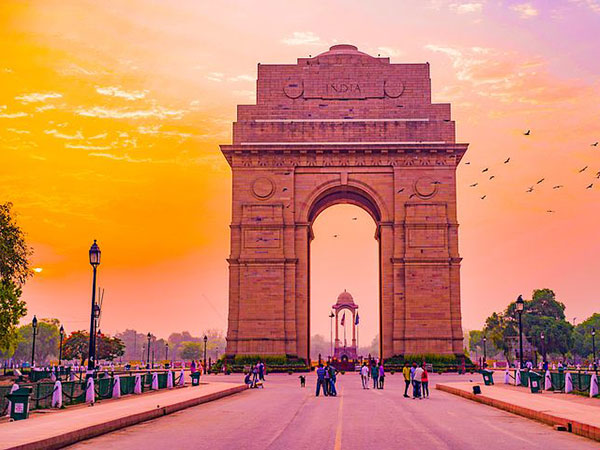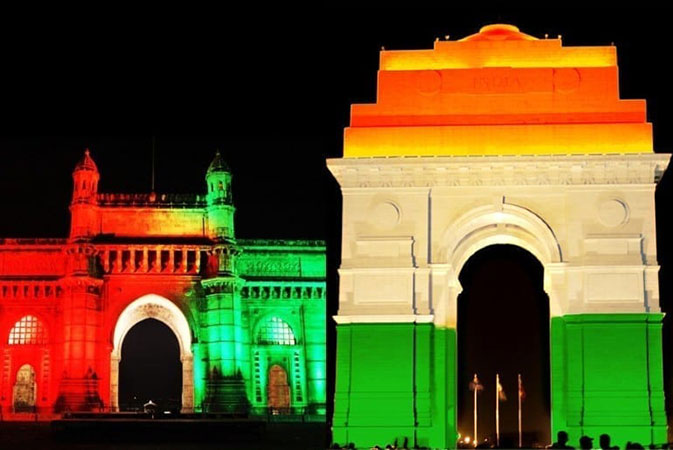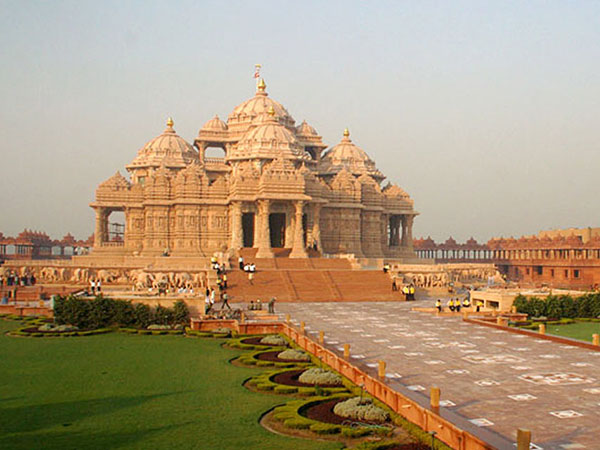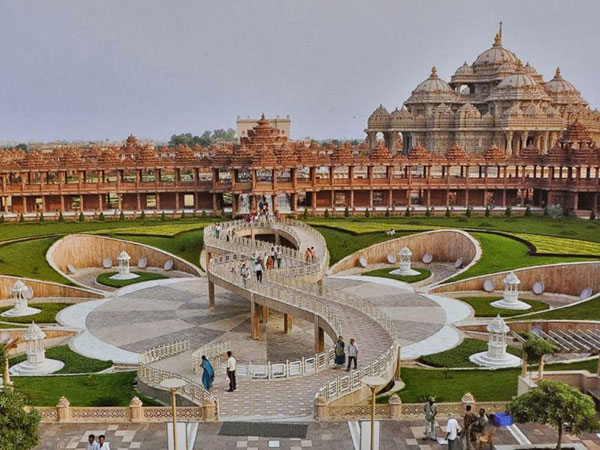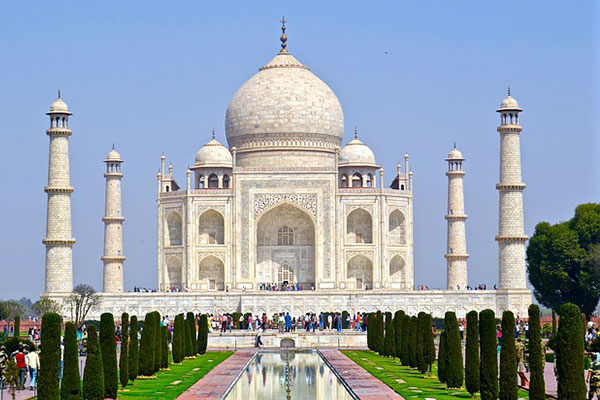Delhi Agra Fatehpur Sikri 4 Nights 5 Days
The Taj Mahal (meaning Crown of the Palace) is an ivory-white marble mausoleum on the south bank of the Yamuna river in the Indian city of Agra. It was commissioned in 1632 by the Mughal emperor, Shah Jahan (reigned from 1628 to 1658), to house the tomb of his favourite wife, Mumtaz Mahal. The tomb is the center piece of a 17-hectare (42-acre) complex, which includes a mosque and a guest house, and is set in formal gardens bounded on three sides by a crenellated wall.
Fatehpur Sikri, Located at a distance of 40km from Agra, Fatehpur Sikri is a perfect one day trip from Agra. A city predominantly made of red sandstone, Fatehpur Sikri was founded in 16th century by Mughal Emperor Akbar. It is essentially a fortified city built by the king and had been the capital of his Empire for fifteen years. Now a UNESCO world heritage site and a famous tourist attraction, it is a fine example of Mughal architecture. Fatehpur Sikri is home to Jodha Bai’s palace, Jama Mosque, Buland Darwaza, and a Tomb of Salim Chisti among many other famous monuments, each of which, is an integral part of the Indian heritage.
Akshardham or Swaminarayan Akshardham complex is a Hindu mandir, and a spiritual-cultural campus in New Delhi, India. Also referred to as Akshardham Temple or Swaminarayan Akshardham, the complex displays millennia of traditional Hindu and Indian culture, spirituality, and architecture. The temple, which attracts approximately 70 percent of all tourists who visit Delhi, was officially opened on 6 November 2005 by Dr. A.P.J. Abdul Kalam. It sits near the banks of the Yamuna adjacent to the 2010 Commonwealth Games village in eastern New Delhi. The temple, at the centre of the complex, was built according to the Vastu shastra and Pancharatra shastra.
Tour Itinerary
- Delhi
- Agra Fort
- Taj Mahal
- Fatehpur Sikri
- Akshardham
- India Gate
- The Red Fort
- Lotus Temple
- Qutub Minar
- Rashtrapati Bhawan
- Drop Airport Delhi
-
Destination
-
Departure
Agra / Delhi -
Departure Time
Approximately 10:00 AM or 11:00 AM -
Return Time
Approximately 5:00 PM -
Dress Code
Casual and Comfortable -
Included
Airport TransferBreakfastDinner -
Not Included
5 Star AccommodationGallery TicketLunchPersonal Guide
Tour Plan
DAY 1: Agra to Taj Mahal Visit
The Taj Mahal (meaning Crown of the Palace) is an ivory-white marble mausoleum on the south bank of the Yamuna river in the Indian city of Agra. It was commissioned in 1632 by the Mughal emperor, Shah Jahan (reigned from 1628 to 1658), to house the tomb of his favourite wife, Mumtaz Mahal. The tomb is the centerpiece of a 17-hectare (42-acre)[5] complex, which includes a mosque and a guest house, and is set in formal gardens bounded on three sides by a crenellated wall.
The Museum was established in 1982 in the ground floor in western Naubat Khana, also known as Jal Mahal, with in the Taj Mahal complex. It is a double storied building having a quadrangle projection outside and is built on a raised platform. The museum comprises of three galleries in addition to the main hall and has on display various exhibits relating mostly to the construction of the Taj Mahal and to the period of its builders. Totally 121 antiquities are on display, which are broadly categorized as Mughal miniature paintings, manuscripts, government decrees, specimen of calligraphy, arms, utensils, plans and drawings of Taj Complex, paintings, specimen inlay work, marble pillars, etc
Agra Fort is a historical fort in the city of Agra in India. It was the main residence of the emperors of the Mughal Dynasty till 1638, when the capital was shifted from Agra to Delhi. The Agra fort is a UNESCO World Heritage site. It is about 2.5 km northwest of its more famous sister monument, the Taj Mahal. The fort can be more accurately described as a walled city
- Meal:- Dinner
- Night Agra
DAY 2: Agra Local to Fatehpur Sikri to Delhi Visit
Tomb of I'timād-ud-Daulah I'timād-ud-Daulah kā Maqbara) is a Mughal mausoleum in the city of Agra in the Indian state of Uttar Pradesh. Often described as a "jewel box", sometimes called the "Baby Tāj", the tomb of I'timād-ud-Daulah is often regarded as a draft of the Tāj Mahal. Along with the main building, the structure consists of numerous outbuildings and gardens. The tomb, built between 1622 and 1628 represents a transition between the first phase of monumental Mughal architecture – primarily built from red sandstone with marble decorations, as in Humayun's Tomb in Delhi and Akbar's tomb in Sikandra – to its second phase, based on white marble and pietra dura inlay, most elegantly realized in the Tāj Mahal.
Fatehpur Sikri, Located at a distance of 40km from Agra, Fatehpur Sikri is a perfect one day trip from Agra. A city predominantly made of red sandstone, Fatehpur Sikri was founded in 16th century by Mughal Emperor Akbar. It is essentially a fortified city built by the king and had been the capital of his Empire for fifteen years. Now a UNESCO world heritage site and a famous tourist attraction, it is a fine example of Mughal architecture. Fatehpur Sikri is home to Jodha Bai's palace, Jama Mosque, Buland Darwaza, and a Tomb of Salim Chisti among many other famous monuments, each of which, is an integral part of the Indian heritage.
- Meal:- Breakfast Dinner
- Night Delhi
DAY 3: Delhi to Akshar Dharm & Local Market Visit
Akshardham or Swaminarayan Akshardham complex is a Hindu mandir, and a spiritual-cultural campus in New Delhi, India. Also referred to as Akshardham Temple or Swaminarayan Akshardham, the complex displays millennia of traditional Hindu and Indian culture, spirituality, and architecture. The temple, which attracts approximately 70 percent of all tourists who visit Delhi, was officially opened on 6 November 2005 by Dr. A.P.J. Abdul Kalam. It sits near the banks of the Yamuna adjacent to the 2010 Commonwealth Games village in eastern New Delhi. The temple, at the centre of the complex, was built according to the Vastu shastra and Pancharatra shastra.
- Meal:- Breakfast & Dinner
- Night Delhi
DAY 4: Delhi Local Side Seen Visit
India Gate is a war memorial located astride the Raj path, on the eastern edge of the ‘ceremonial axis’ of New Delhi, formerly called Kingsway. India gate is a memorial to 82,000 soldiers of the undivided Indian Army who died in the period 1914–21 in the First World War, in France, Flanders, Mesopotamia, Persia ,East Africa, Gallipoli and elsewhere in the Near and the Far East, and the Third Anglo-Afghan War. 13,300 servicemen's names, including some soldiers and officers from the United Kingdom, are inscribed on the gate. The India Gate, even though a war memorial, evokes the architectural style of the triumphal arch like the Arch of Constantine, outside the Coliseum in Rome, and is often compared to the Arc de Triumphed in Paris, and the Gateway of India in Mumbai. It was designed by Sir Edwin Lutyens. In 1971, following the Bangladesh Liberation war, a small simple structure, consisting of a black marble plinth, with reversed rifle, capped by war helmet, bounded by four eternalflames, was built beneath the soaring Memorial Archway. This structure, called Amar Jawan Jyoti, or the Flame of the Immortal Soldier, since 1971 has served as India’s Tomb of the Unknown Soldier.
The Red Fort is a historical fortification in the national capital of New Delhi. Located in the center of the city, it was the main residence of the emperors of the Mughal dynasty. It was constructed by Shah Jahan in the year 1939 as a result of a capital shift from Agra to Delhi. This imposing piece of architecture derives its name fromits impregnable red sandstone walls. In addition to accommodating the emperors and their households, it was the ceremonial and political center of the Mughal state and the setting for events critically impacting the region. Today, this monument is home to a number of museums that have an assortment of precious artifacts on display. Every year, the Indian Prime Minister unfurls the national flag here on the Independence Day.
Lotus Temple, located in Delhi, India, is a Bahá'í House of Worship that was dedicated in December 1986. Notable for its flowerlike shape, it has become a prominent attraction in the city. Like all Bahá'í Houses of Worship, the Lotus Temple is open to all, regardless of religion or any other qualification. The building is composed of 27 free- standing marble-clad "petals" arranged in clusters of three to form nine sides, with nine doors opening onto a central hall with a height of slightly over 34.27metres and a capacity of 2500 people. The Lotus Temple has won numerous architectural awards and has been featured in many newspaper and magazine articles. A 2001 CNN report referred to it as the most visited building in the world
Qutub Minar, The soaring and brave tower that allures tourists despite being destroyed by ravages of natural apocalypses several times, Qutub Minar is the tallest individual tower in the world and second tallest monument of Delhi. A UNESCO World Heritage Site, it is located in Mehrauli and its construction was started in 1192 by Qutb Ud-Din-Aibak, founder of Delhi Sultanate. Later, the tower was built by various rulers over the centuries. The sight of this glorious monument takes you back to the rich history of India
- Meal:- Breakfast & Dinner
- Night Delhi
DAY 5 : Delhi Local to Drop Delhi
Humayun Tomb Located near the crossing of Mathura road and Lodhi road, this magnificent garden tomb is the first substantial example of Mughal architecture in India. It was built in 1565 A.D. nine years after the death of Humayun, by his senior widow Bega Begam. Inside the walled enclosure the most notable features are the garden squares (chaharbagh) with pathways water channels, centrally located well proportional mausoleum topped by double dome.There are several graves of Mughal rulers located inside the walled enclosure and from here in 1857 A.D; Lieutenant Hudson had captured the last Mughal emperor Bahadur Shah II.
Mughal Gardens Popularly known as the “soul” of the Presidential Palace, the Mughal Gardens are located inside the Rashtrapati Bhawan Complex. Designed by Sir Edwin Lutyens in the year 1917 for Lady Harding, the gardens cover a vast area of 13 acres and are a wonderful incorporation of Mughal architecture with that of British style. Inspired by the Mughal Gardens in Jammu and Kashmir, the ones in Delhi have succeeded in replicating the same charm and creating the picture perfect verdure panorama. The entire complex is a breathtaking combination of Circular, Spiritual, Bonsai, Herbal, Tactile and Musical Gardens. The gardens feature an extensive variety of seasonally blooming flowers and present a spectacular euphoric picture altogether.
Rashtrapati Bhavan,Located on the western end of the Rajpath in New Delhi, the Rashtrapati Bhavan is the official residence of the President of India. It was originally built with the intent of serving as the Viceroy's House. With its 340 rooms in the main building covering 5 acres on an estate of 330 acres, it is one of the largest residences of any head of the state in the world. This majestic piece of architecture was conceptualized by renowned architects Sir Edwin Lutyens and Herbert Baker. The construction saw completion in the year 1929 and now stands today as a magnificent symbol of all that India is. Its current inhabitant is President Ram Nath Kovind who assumed office in July 2017……………………..Drop Delhi Railway station or Airport
- Meal:- Breakfast


